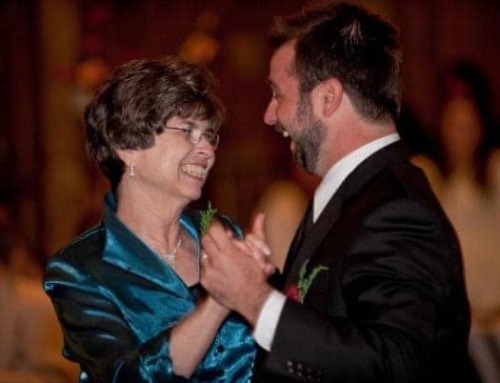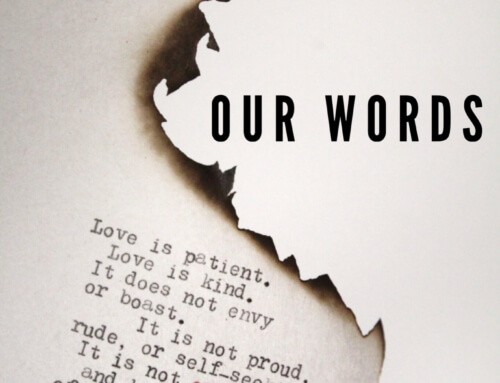Here I reflect on the harm that occurs when restoration is not present, when acts of sexual brokenness are sanctioned by structures of power and, often, complicit church hierarchies. Please note: this article features a quote (widely circulated in news media last year) that is violently degrading and may be triggering.
The Barna group recently launched a nationwide study on pornography called the “Porn Phenomenon.” They report “most pastors (57%) and youth pastors (64%) admit they have struggled with porn, either currently or in the past.” Though 56% of women under the age of 25 seek out pornographic materials, 81% of teen and young adult men, ever seek it out.1 Further research suggests that this addicted male majority has unconsciously furthered systems of patriarchy, which advance pornographic styles of relating that reduce women to objects that could be mastered and controlled.2, 3, 4
Shame & Silence
The church is a notorious culprit of using shame and silence to restrict conversations around healthy sexual development. I believe this deafening silence is directly connected to the statistic above. The shame of hidden pornography use serves the purpose of keeping the addicted male leadership seeking control and setting up structures of power to hide behind. Of course this is not true of all men in power; it’s actually quite difficult to be in any management position, and even more difficult leading a church. This article aims to name the ways the epidemic of pornography use within Christendom has led to unconscious misogyny within the Church and within American culture. My hope is to inspire the Church and those of us in positions of power to own our sexual brokenness and begin to lead our congregations from places of honor and equity instead of objectification and subjugation.
Owning our sin involves confessing our sexual brokenness.
To transform these heartbreaking cultural norms as Christians we must lead with our brokenness, as Paul demonstrates in 1 Timothy 1:15 “Christ Jesus came into the world to save sinners, of whom I am the worst.” Owning our sin involves confessing our sexual brokenness (including but not limited to pornography addiction). When we don’t take ownership of our sexual brokenness then our unacknowledged shame can have more power to guide us than we would like. In men, for instance, this could lead many in leadership roles to put women in their “proper” place to lead the children’s department and women’s ministry, not allowing women in the pulpit or too close to the male leadership in unconscious fear of their sin being exposed. It is less about a woman’s capability and more about the male leader’s own intensifying of shame around his history of objectifying the feminine. I am aware, of course, this is not always the case with excluding women from leadership roles, there are many different theological positions, and if you hold these more classical positions I am not saying you are therefore addicted to pornography. I am arguing, though, that there is a link between the degradation of women and the Church’s silent complicity.
Power Dynamic
I know this dynamic worked well for my own sexual addiction when I was a pastor. I am sure I am not the only man who found their worth and security in positions of power, which a sexual addiction only affirmed. Power and pornography have a very interdependent relationship.4 In regards to power, whoever is in charge gets to set the rules. When you have the power to define the “norms” you can make sure that they benefit you or those most like you. This is not a consciously selfish act; I have found most men have holy intentions, they just look out of the window of their own experience without taking the time to name their own implicit bias. Then this male leader defines what is universally true for all, when it is actually only true for him and those like him—rather than taking the time to listen to the experiences of different, diverse others. This abuse of power comes from unaware privilege and the reality that as a straight, white, Christian man I must acknowledge and be aware that addiction influences my judgment and my leadership.
When this power dynamic is mixed with underlying sexual addictions it creates a “perfect storm” of an epidemic of church-ordained misogyny. Women are silenced, told to remain small, not to use their voice or their power. I believe this patriarchy-addicted system in the Church is insidious and is the same misogynistic undercurrent that led 81% of white evangelical Christians to vote for Donald Trump.5 The man who, at the tender age of 59, said in a private conversation with television host Billy Bush before a taped recording of Access Hollywood:
“I did try and f**k her. She was married… I moved on her like a b***h, but I couldn’t get there. And she was married. Then all of a sudden I see her, she’s got the big phony tits and everything… I’ve got to use some Tic Tacs, just in case I start kissing her. You know I’m automatically attracted to beautiful. I just start kissing them. It’s like a magnet. Just kiss. I don’t even wait. And when you’re a star, they let you do it. You can do anything. Grab them by the p***y. You can do anything.” 6
This type of explicit sexual violence has attempted to be normalized, calling it “locker room talk” and implying that this is standard practice for men. Sadly, Trump is not far off. In certain circles of men, it is customary—but only for pornified men who no longer respect women nor look at them as image bearers of God. Shouldn’t the Church be different? Shouldn’t we the people of Christ be leading the resistance against this type of behavior instead of consenting to it? This sinful posture of misogyny should not be honored by Christ’s Church or the highest office in the land but wholeheartedly opposed and oppression against women dismantled.
Shouldn’t we the people of Christ be leading the resistance against this type of behavior instead of consenting to it?
This is why we saw millions of people (a majority women) worldwide marching in the streets the day after the inauguration. Arguably the largest single day march in American history. A large “Hell No” to sexual violence and unconscious suppression of those who threaten insecure leadership. I felt alive standing with more than 150,000 people in the Women’s March in Seattle. Though I did not agree with every one of the platforms (I am a pro-life progressive), I knew why I was marching and knew why I needed to. It was a beautiful display of holy resistance to a patriarchal system that we have all been complicit in for far too long.
All of Christ’s bride must rise in defiance to this degrading attack of the Imago Dei in both the masculine and the feminine. Dehumanizing discourse against woman can no longer be acceptable, and men must be man enough to say so. In particular, my call to men is we must use our privilege and power to stand up to injustice of all forms, including subversive forms of racism and sexism, and join alongside those who have been historically marginalized. By silencing a part of God’s image in women, we are missing out on hearing from the very God who never stops speaking to us and through us all.
Resources
1 The Porn Phenomenon. (2016, June 19). Retrieved February 06, 2017, from http://www.barna.com/the-porn-phenomenon/#.VqZoN_krIdU
2 Bridges, A. J., Wosnitzer, R., Scharrer, E., Chyng, S., and Liberman, R. (2010). Aggression and Sexual Behavior in Best Selling Pornography Videos: A Content Analysis Update. Violence Against Women 16, 10: 1065–1085.
3 Boeringer, S. B. (1994). Pornography and Sexual Aggression: Associations of Violent and Nonviolent Depictions with Rape and Rape Proclivity. Deviant Behavior 15, 3: 289–304; Check, J. and Guloien, T. (1989). e E ects of Repeated Exposure to Sexually Violent Pornography, Nonviolent Dehumanizing Pornography, and Erotica. In D. Zillmann and J. Bryant (Eds.) Pornography: Research Ad- vances and Policy Considerations (pp. 159–84). Hillsdale, N.J.: Lawrence Erlbaum Associates; Marshall, W. L. (1988). e Use of Sexually Explicit Stimuli by Rapists, Child Molesters, and Non-O enders. Journal of Sex Research 25, 2: 267–88.
4 Hald, G. M., Malamuth, N. M., and Yuen, C. (2010). Pornography and Attitudes Supporting Violence Against Women: Revisiting the Relationship in Nonex- perimental Studies. Aggression and Behavior 36, 1: 14–20; Berkel, L. A., Vandiver, B. J., and Bahner, A. D. (2004). Gender Role Attitudes, Religion, and Spirituality as Predictors of Domestic Violence Attitudes in White College Students. Journal of College Student Development 45:119–131; Zillmann, D. (2004). Pornogra e. In R. Mangold, P. Vorderer, and G. Bente (Eds.) Lehrbuch der Medienpsychologie (pp.565–85). Gottingen, Germany: Hogrefe Verlag; Zillmann, D. (1989). E ects of Prolonged Consumption of Pornography. In D. Zillmann and J. Bryant (Eds.) Pornography: Research Advances and Policy Considerations (p. 155). Hillsdale, N.J.: L. Erlbaum Associates.
5 Smith, G. A., & Martínez, J. (2016, November 09). How the faithful voted: A preliminary 2016 analysis. Retrieved January 24, 2017, from http://www.pewresearch.org/fact-tank/2016/11/09/how-the-faithful-voted-a-preliminary-2016-analysis/
6 Fahrenthold, D. A. (2016, October 08). Trump recorded having extremely lewd conversation about women in 2005. Retrieved February 21, 2017, from https://www.washingtonpost.com/politics/trump-recorded-having-extremely-lewd-conversation-about-women-in-2005/2016/10/07/3b9ce776-8cb4-11e6-bf8a-3d26847eeed4_story.html?utm_term=.2c0402766907






